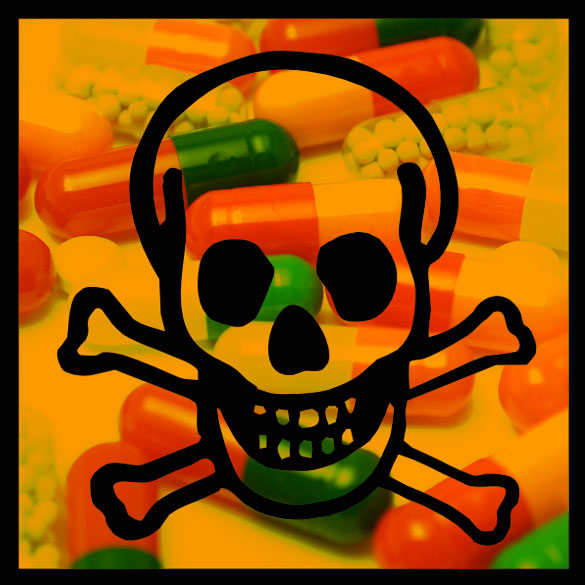Pharmaceutical Drugs have an average of 70 side effects or ‘drug reactions’, with some as high as 525. This is done to prevent lawsuits against the manufacturers rather than to protect people from them and I believe mainly done to advertise the drug. The most complex labeling can be seen in drugs for psychiatry and neurology, primarily for antidepressants.
The commonly accepted reason for stating all these side effects is for liability, however I think it goes deeper than that. It’s repetition, attention and acceptance. The side effects are repeated endlessly every time you see mention of the drug. This allows your brain to be conditioned, through repetition, to associate the drug with the condescending speech patterns and intonations of the speaker. Notice their hushed, deep tones and the authoritarian manner of speaking. The next phase of repetition is the daily barrage of advertising for these drugs. They club you over the head with it repeatedly, day after day.
The attention factor comes into play with the glowing scenes of beaches, vacations and trips to New Zealand. This is pure cognitive dissonance- showing something completely unrelated to what is being presented to get you to accept the original intention. Cognitive dissonance theory states that we have an inner drive to hold all of our attitudes and beliefs in harmony and avoid disharmony. Cognitive dissonance occurs when there are conflicting beliefs or behaviors that lead to behaviors to reduce the discomfort and restore balance, i.e.- taking the advertised drug. Your attention is captured by showing you scenes of life that everyone either wants or aspires to attain. Long walks on the beach, birthday parties and beautiful scenery are all part of the set up for the cognitive dissonance they are laying on you.
Through repetition and attention you have now unwittingly accepted the drug proposition in your subconscious mind. The side effects have now become part of the packaging and the repetition of them only further reinforces it. The stating of side effects is done to further assault your mind, cause cognitive dissonance and get you to subconsciously accept the idea of finding out more about the drug. This is done intentionally through statements such as…may cause internal bleeding…bruising…a tendency to gamble…uncontrolled sexual urges…..death…these are all shock value statements designed to create fear and grab your attention. Your brain wants to restore harmony from these vile conditions through cognitive theory and thus accepts these conditions as something that has to be dealt with- whether they apply to you or not. I believe that the side effects and the stating of them are more important in the advertising of the drug than the drug itself. The call to action is in the side effects as well as the attention gained through cognitive dissonance and repetition. The fear created through these aberrant advertisements is palpable and a primary motivator to get you to “…ask your doctor”, about the latest big pharma drug push. The drug cartels of the 80’s and the Mexican cartels of today have never been this ingenious in pushing their chemicals onto an unwary public.
—
Steve Ricke writes satire and short stories of real life experiences distilled through his unique perspective. His profession is business development management in technical and scientific organizations. He has a BBA in Management from the University of North Florida. His writing is entertainment and humor based, ‘off the beaten path’.
stevrer87.blogspot.com
“Internationally Acclaimed Writer of Gibberish”



